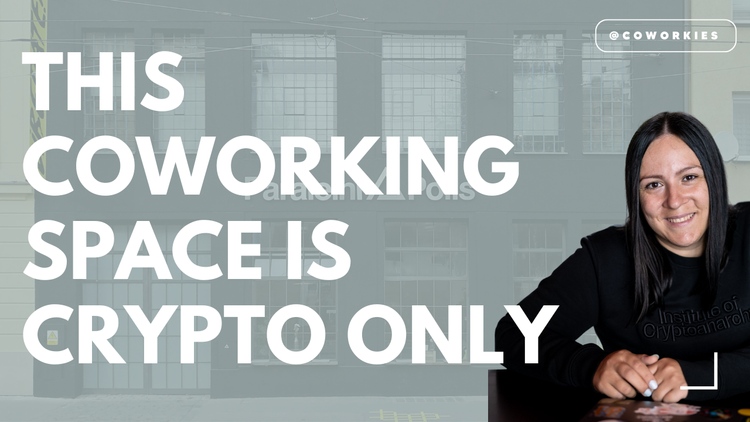Marketing for Coworking Spaces - Coworkies Readers’ Club Online Event Key Takeaways + Access To Video Replays
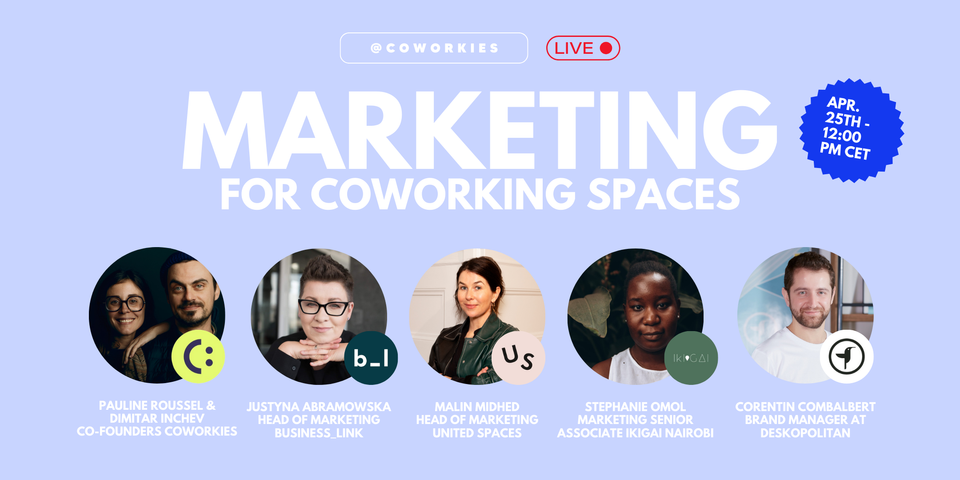
This article is a condensed summary of the April online event hosted by the Coworkies Readers’ Club on Marketing for Coworking Spaces. It addresses ways to build a solid foundation in marketing, from understanding why marketing is important to figuring out who you market to and how. It also touches on the interconnectedness of marketing to other pillars of a coworking business and practical case studies from 4 different coworking brands.
In our last event recap’ on sales in coworking spaces, we talked about sales being a pain and a cure.
- A pain because it is a difficult task.
- A cure as without it no business can thrive.
While learning from the experience of our speakers back then, one element became apparent: beyond knowing what you sell, you have to figure out how to sell your coworking products and services in your local market, to the right audience(s). The ‘how’ to sell has a name, it is called: marketing.
Hence, in April, and to expand on what was learned so far, the Coworkies Readers’ Club met again online, this time to learn all there is to know about marketing for coworking spaces. Let’s face it, the challenges around marketing a coworking space anywhere in the world are real. While preparing for this event, we surveyed our community to truly nail down their current marketing challenges and take the opportunity of this LIVE event to address them.
From figuring out the best channels to use to understanding who your target audience truly is and what resonates with them to finding your brand voice and being able to showcase your true purpose visually, to, last but not least, having the time to produce the right content - there are tons of parameters to consider. Oftentimes, for coworking teams with limited manpower, this feels oh so overwhelming.
Reading the last sentence might make you feel out of breath. Let’s press pause for a second.
Marketing for coworking spaces is like a web. You have to spin it starting from the core and gradually going in the direction(s) where your target audience(s) and communities are.
The recap below is a short summary of the 120 minutes spent with the Coworkies Readers’ Club in discussing ways to build a solid marketing strategy that works for you. It contains key takeaways and replays from the 3 conversations we had with our 4 speakers and aims to support you in building the right marketing toolbox for your coworking brand.
Let’s begin!
Marketing For Coworking Spaces, What Are We Talking About in 2024?
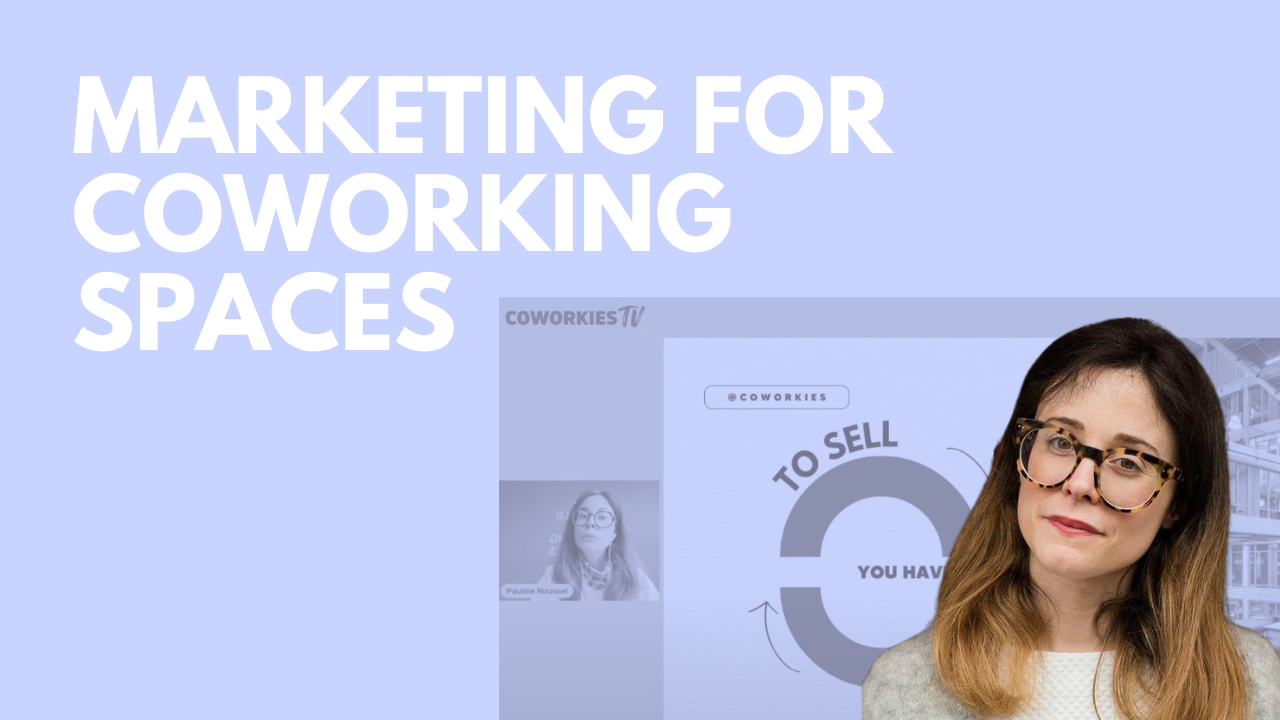
The event began with a 20-minute presentation during which the Coworkies team introduced the foundations of what composes, today in 2024, a marketing strategy for a coworking space. Beyond the different channels available, we also touched on common marketing mistakes coworking teams are making and gave bits and pieces of solutions to improve on.
Here are 5 key takeaways we addressed:
- Understand and Adapt to Your Target Audience(s): Clearly define your target audience(s) and take some time to understand how they ‘consume’ content online. Be where they are, not where you feel the most comfortable.
- Marketing is a mix of online and offline activities.
- Narrowing an Effective Digital Presence: If you have a website, make sure it is responsive (mobile-friendly) but beyond that, make sure it works. How many times have we landed on broken or insecure web pages for coworking spaces? You’d be surprised by the answer! Echoing the previous point on your target audience, use social media platforms they use. You do not need to be everywhere. You need to be where they are. (Yes, we’ll repeat that a few times more 🙂)
- Leverage Offline Marketing: Use events, local partnerships, and physical signage to create a local presence and engage with the community. Tap into traditional media and outdoor advertising and don’t just ‘think’ it might be expensive. Get pricing from local media outlets to make an informed decision and not an assumed one.
- Create Authentic Content for Better Engagement: With the rise of tools like ChatGPT, more and more content started to feel generic and some words are now totally assimilated into ChatGPT’s language. While it’s great to use AI to save time, make sure to spend some time refining the propositions you get and connect it to your way of writing, and your tone of voice.
- Align Marketing with Sales and Community Objectives:
- Integration with Sales: Ensure that marketing and sales teams communicate and are aligned to provide a consistent message and facilitate a smooth customer journey. (More on that later in one of the talks that awaits below)
- Community Focus: Market the community aspect of your coworking space by showcasing real member stories and using internal marketing to foster a sense of belonging among current members.
- Measure Your Marketing Efforts To Improve and Tap into What Works: Use analytics and feedback to measure the effectiveness of different marketing strategies and make informed adjustments. Track key performance indicators to understand what works and where improvements are needed.
Marketing For Coworking Spaces, Top 3 Most Common Mistakes
Inconsistent posting is the #1 mistake to avoid. The success of a solid marketing strategy lies in one thing: CONSISTENCY.
You have some “dead” social media accounts because you don’t utilize them all. Put yourself in the shoes of a potential future member for a second. What would they think if they saw that the last time you posted on your blog, or on some of your social channels was 1 or 2 years ago? They might wonder if you still exist.
One more time stressing the importance of knowing who you wish to attract and where they are. Do your research, and talk to your core target audience(s) to be seen where you should be seen. By not doing it, you do not maximize the ROI (Return on Investment here being your time) of your marketing efforts.
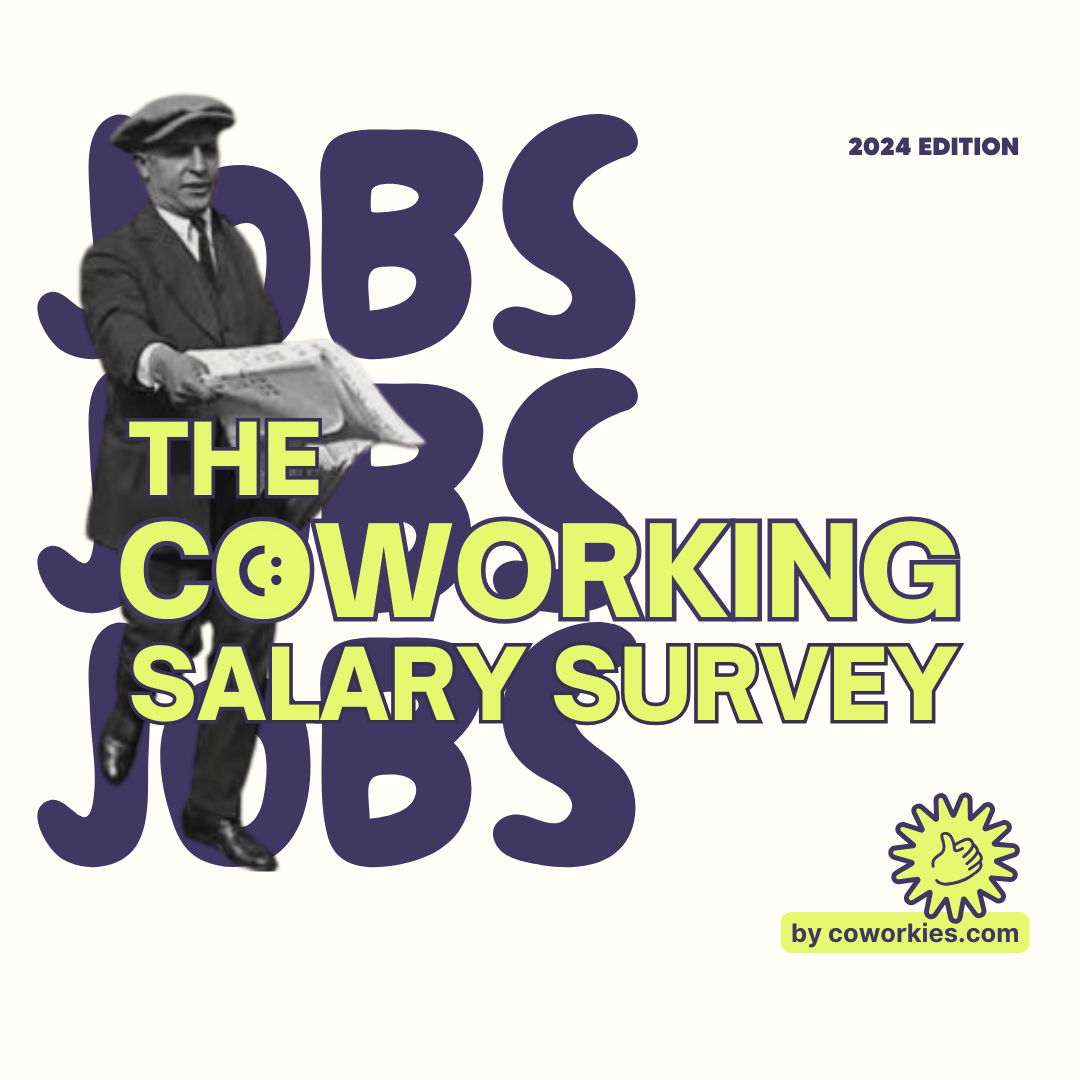
Take The Coworking Salary Survey 2024
Introducing The Coworking Salary Survey, a global initiative that aims at bringing more clarity on compensation trends across the industry. Help us in making it happen, take the short anonymous survey below 👀.
Take The SurveyHow To Market Your Coworking Space?
A conversation with Justyna Abramowska, Head of Marketing at Business Link, one of Poland’s most dynamic flexible office space brands.
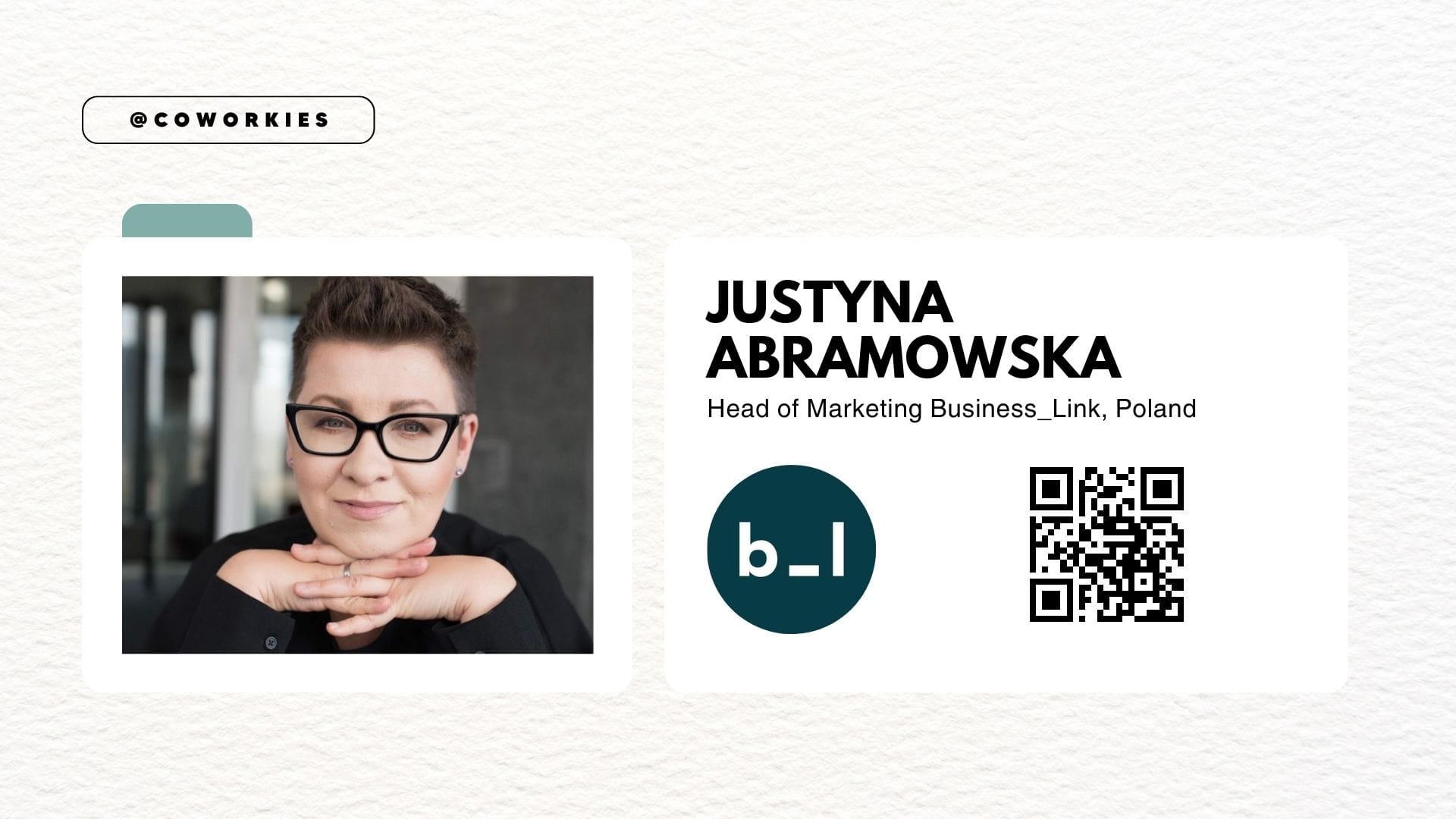
“Knowing what your clients are thinking and why they are not satisfied is where there is a huge potential for a marketer... This gap between your product and what the client would like to have is crucial to address."
A Short Summary of Business Link’s Marketing Strategy
- Client Segmentation and Targeted Marketing: Business Link is very clear on who their customers are. The brand has identified three main groups of clients and uses specific strategies for each:
- Small and Medium Enterprises (SMEs): Focus on offline marketing and supporting the ICT community.
- Hybrid Groups (medium to large enterprises): Use online marketing, blogging, and content about flexible and hybrid work arrangements.
- Large Corporates and Brokers: Focus on broker channels and online communication, with some incentives used to attract these larger firms.
- Content Creation: Business Link focuses on generating high-quality, relevant content that appeals to their target audience. This includes participation in and creation of important materials related to ways of working and supporting different community needs, like their involvement in a report on neuro-inclusive design.
- Digital Presence and SEO: Their website and digital tools, particularly SEO play a significant role in attracting clients. They invest in making their website a key point of interaction where all marketing efforts converge.
- Direct and Offline Marketing: For certain segments, especially in the ICT sector, direct contacts and offline marketing through events, conferences, and partnerships are crucial.
- Client Satisfaction and Feedback: Business Link conducts regular client satisfaction surveys to understand their client's needs and preferences but also to measure the effectiveness of their marketing strategies.
- Collaboration with Sales and Expansion Teams: Justyna emphasized the importance of working closely with the leasing and expansion teams to understand changing client needs and to ensure that marketing efforts are aligned with these changes.
Top 3 key takeaways:
🎛️ The Shift from Coworking to Flex Office: Business Link has evolved to focus on larger clients, adapting their services to various working models and emphasizing the shift to a flexible office space provider.
🔑 Community and Content Are Key: The strategic pivot back to community engagement highlights the importance of content marketing and direct community involvement in building a successful brand presence.
🔍 Understanding and Segmenting the Market: Business Link tailors its marketing to different client groups showing the importance of targeted strategies. For SMEs, offline interactions are crucial; for hybrid and larger groups, digital content and direct marketing are more effective.
How To Market Your Coworking Brand in Different Cities?
A conversation with Malin Midhed, Head of Marketing at United Spaces, Sweden's pioneering coworking brand, with one of the largest footprint across the country.
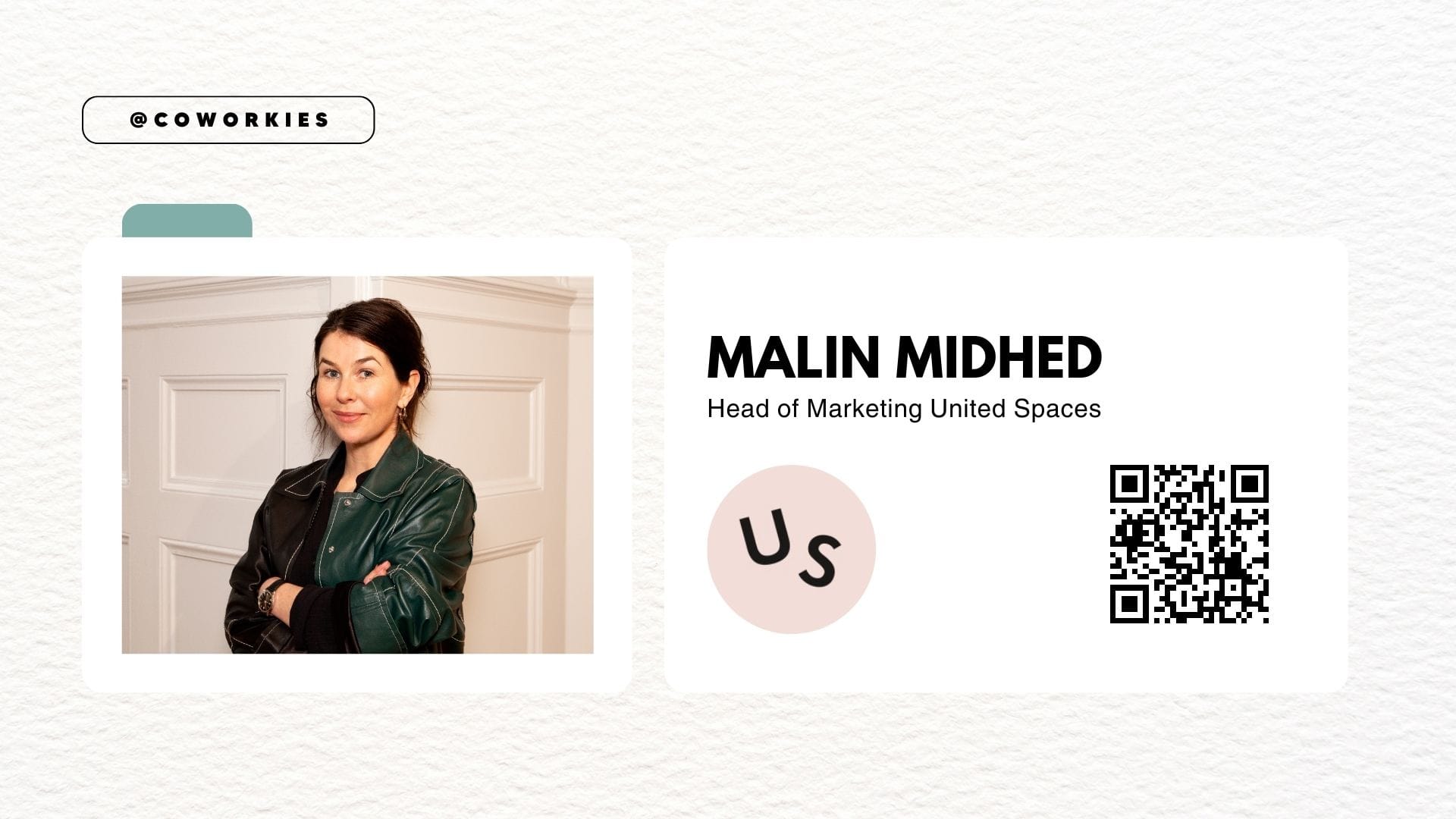
"Our team is the brand at United Spaces. If they are happy, our members will see that."
United Spaces, one of the first coworking brands was established in1999. Celebrating 25 years, the brand has maintained its core mission of connecting and inspiring people, even as it expands under the ownership of real estate company Castellum.
A Short Summary of United Spaces' Marketing Efforts
Rebranding and Brand Positioning: Last year, United Spaces underwent a significant rebranding to align more closely with its core values. This included a new website, brand guidelines, and a refreshed brand identity, emphasizing the tagline 'Come Grow with Us.' This tagline reflects their mission to support the growth of businesses and individuals.
Digital Marketing and Member Engagement: Digital marketing is a major focus due to its extensive reach. However, members remain the most significant ambassadors of the brand. United Spaces invests in making its members the heroes of their marketing narrative because their testimonials and experiences ‘market’ the brand most effectively.
Team and Internal Culture: The success of their marketing strategy heavily relies on the strength and engagement of their team. The community managers and hosts are vital, as they embody the brand daily. Effective marketing strategies are less impactful without a dedicated team that understands and believes in the brand values.
Challenges and Local Market Adaptation: Despite the central marketing platform, understanding local markets is crucial, especially in smaller cities where United Spaces operates. Local influencers, media partnerships, and events are tailored to the unique business landscape and culture of each city.
Top 3 Key Takeaways
✨ Importance of Authentic Community Engagement: United Spaces focuses on authentic experiences and connections within their spaces. They facilitate networking and community building through various events and personal interactions, ensuring members feel valued and integrated.
👥 The Role of the Team in Brand Perception: The front-line team is crucial in shaping how members perceive the brand. A happy, engaged team creates a positive atmosphere, making the coworking space more appealing to current and prospective members.
🤸🏽♀️ Adaptability in Marketing Strategy: The shift from purely digital to more personal, experience-based marketing reflects a broader trend in the coworking industry. Post-pandemic, there's a stronger emphasis on in-person experiences to foster community and connection.
Why Is Branding Important for Coworking Spaces?
A Conversation with Stephanie Omol, Senior Marketing Associate at Ikigai Nairobi, and Corentin Combalbert, Brand Manager at Deskopolitan.
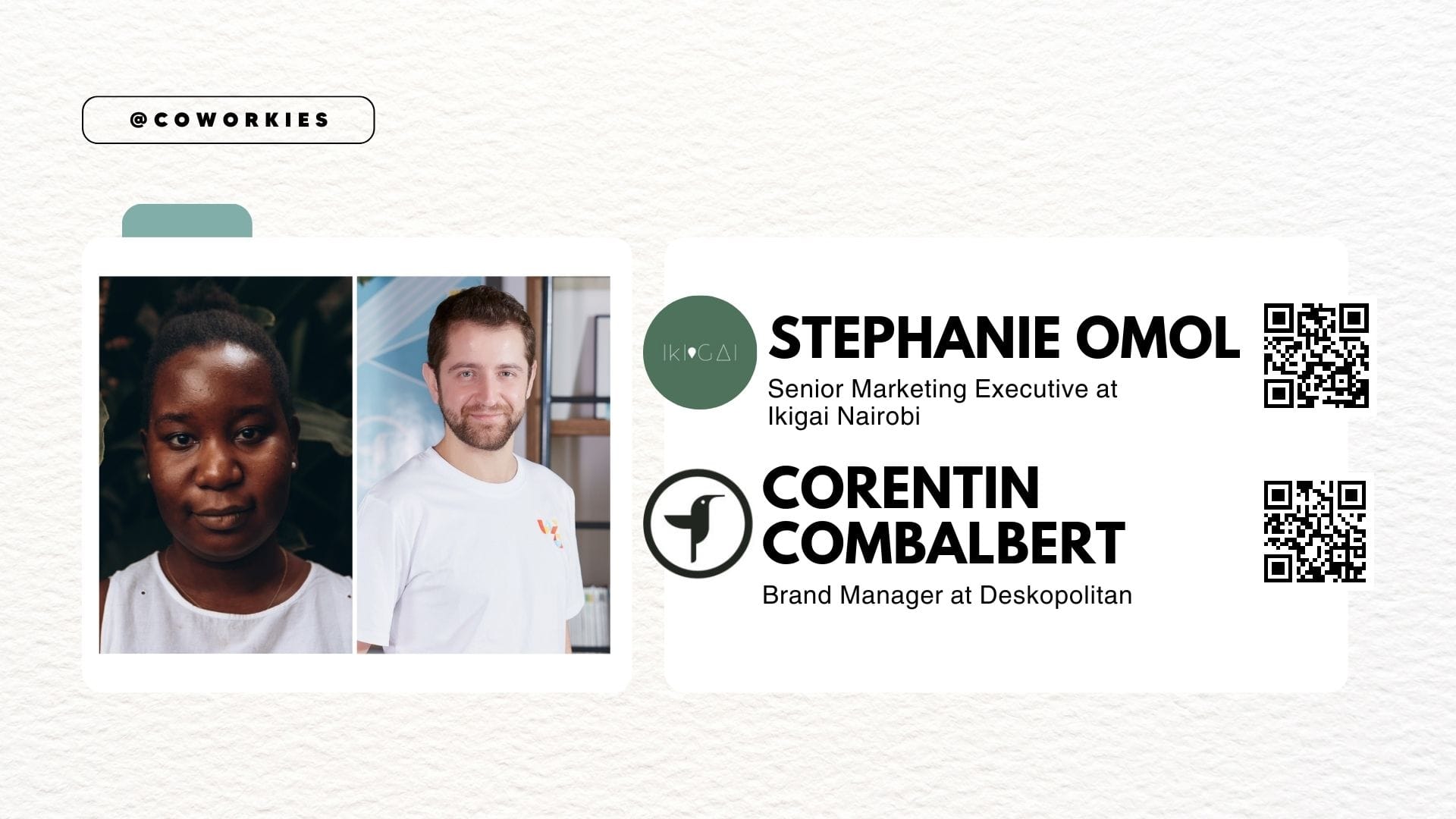
Ikigai Nairobi: A Wellness-Focused Coworking Brand
Ikigai is a collection of wellness-focused coworking spaces in Kenya, with four locations across Nairobi. The brand, inspired by the Japanese concept of Ikigai, meaning "reason for being" or "purpose," aims to create spaces that facilitate focus on core business or personal growth.
"Invest in your Brand Story. A strong Brand Story that’s true to you and compelling to potential customers sets the tone for everything you do as a company." - Stephanie Omol
Deskopolitan: A Unique European Coworking Experience
Corentin Combalbert explains that Deskopolitan, a French coworking brand, is unique in Europe due to its comprehensive campus approach, including hotels, restaurants, sports studios, daycare, and a few other amazing amenities and services. Deskopolitan focuses on a 'move in, move up' philosophy, encouraging entrepreneurs to grow and then expand beyond the coworking space, using Deskopolitan to fit in their perfect office.
"Think about the quality, not the quantity of your content. Work on publishing your content at the right time and to the right people." - Corentin Combalbert
Key Marketing Strategies and Challenges
- Digital and Content Marketing:
- Ikigai Nairobi uses social media as a digital brochure, emphasizing biophilic design and sustainability. The brand focuses on below-the-line marketing to create micro-moments with potential members.
- Deskopolitan prioritizes Search Engine Optimization (SEO) and quality content over quantity. Corentin’s approach has led to a significant increase in website visitors and a strong return on investment.
- Experiential Marketing:
- Ikigai Nairobi believes "nothing beats experiencing our spaces in person." The brand focuses on bringing people into its spaces for tours, events, and meetings to showcase its unique offerings.
- Deskopolitan uses customer experiences and testimonials, shared through articles and videos, to let customers speak about their experiences, enhancing authenticity.
- Brand Story and Community Focus:
- Both brands emphasize the importance of a strong Brand Story and community. Ikigai focuses on wellness and human connections, while Deskopolitan highlights productivity and a premium service range as part of its community-building efforts.
Top 3 Key Takeaways from the Conversation:
🫀 Importance of Authentic Community Engagement: Both Ikigai Nairobi and Deskopolitan focus on building authentic community connections within their spaces. They facilitate networking and collaboration through various events and personal interactions, ensuring members feel integrated and valued.
✍️ The Role of Content in Brand Perception: High-quality, relevant content is crucial for both brands. It helps in shaping how potential members perceive the brand and assists in converting leads into members by highlighting the unique selling points of the spaces.
🎬 Brand Story as a Marketing Foundation: A compelling brand story is essential for both Ikigai and Deskopolitan. It helps in setting the marketing tone and ensures that all activities are aligned with the brand’s core values and mission.


